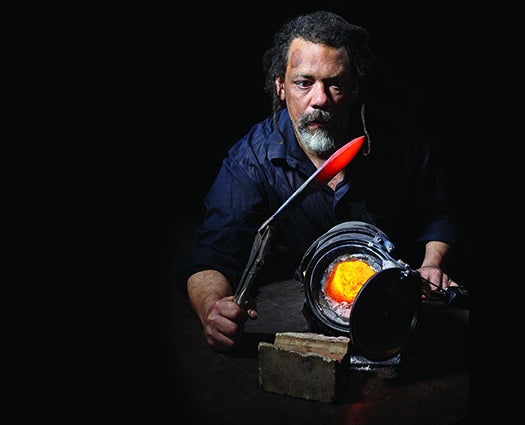How I Used a Paint Can to Forge a Rugged Knife [Video]
Hackett relies on his ingenuity to turn spring steel into an edged blade.

Before bows and arrows, language, and even vertical foreheads, some of our ancestors survived by industriously chipping rocks into sharp tools. Today we take metal knives for granted, yet few are made to survive a world without order.
There are two ways to make a knife: Heat up a hunk of metal and hammer it out, or cut out a rough shape and file it to a sharp edge. The latter seemed easier, and I already had some leaf-spring steel from my days as a craftsman of crossbows [see “Rebuild,” April 2014]. But the metal proved too stubborn to cut with a hacksaw.
I needed a forge. The heat would soften the steel and ready it for shaping. I had only a wimpy workshop blowtorch, which can barely melt solder. But if I could trap its heat in one place, the temperature would rise and rise. So I took an empty paint can, punched a hole in the bottom, and screwed in a conduit fitting to hold the blowtorch in place. Firebrick and rock wool (available in most large boiler rooms) insulated my forge extremely well, and in less than 10 minutes, the leaf spring glowed cherry-red.
The softened steel yielded quickly to my hacksaw and files, and I fashioned the knife with a hollow-ground edge for easy sharpening. I also notched out some serrations, which drew blood even before I finished the project.
Now I had a knife-shaped piece of steel, but a durable blade—hard enough to stay sharp and tough so it doesn’t crack—must cool properly. I used prewarmed canola oil to give my blade the right temper.
Did it work? I submitted my knife to the American Bladesmith Society’s punishing test. The blade had to sever a hanging rope with one swipe, chop through a two-by-four, shave off some hair, and bend at a 90-degree angle without breaking in two. To see how it fared, check out the video above.
